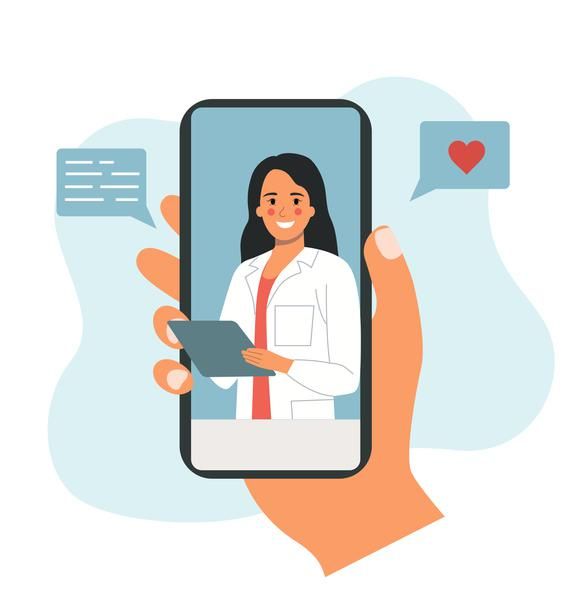The United States Congress has the power to give females resources, equipment and treatments to boost their very own wellness and the well being of their family members. In accordance to HealthyWomen’s CEO Beth Battaglino, RN-C, bipartisan legislation moving via Congress — the Cures 2. Act — would do just that.
To study critical provisions and implications of the laws, HealthyWomen hosted a webinar, “CURES 2.: Foremost Women’s Health Forward,” on May possibly 11, 2022. Moderated by Arika Pierce, J.D., founder and CEO of Piercing Strategies, a management coaching company, the webinar highlighted a array of healthcare industry experts.
CURES 2. is a continuation of bipartisan laws passed in 2016, the 21st Century Cures Act, numerous parts of which will need to be reauthorized by the end of 2022. CURES 2. would construct on the programs, insurance policies and investments included in the initially deal and would advance health care investigation, increase access to new therapies, support caregivers and clear away boundaries to telehealth.
Battaglino noted that women of all ages have to have all of the factors in the CURES 2. legislation to guide very long and balanced lives. “CURES 2. would go a extended way to ensuring that these important providers are accessible to all American girls. Following much more than two years of the Covid pandemic, this legislation has never been extra urgent,” she reported.
The influence on caregivers
Fawn Cothran, Ph.D., RN, GCNS-BC, FGSA, Hunt investigation director at the Nationwide Alliance for Caregiving, shared vital points about U.S. caregivers. There are 53 million unpaid caregivers, the bulk of which are women of all ages who often treatment for a lot more than one person in numerous generations. Unpaid caregivers shell out an average of 24 hrs per week on caregiving responsibilities, the equivalent of a aspect-time work, and practically 60% also do the job in having to pay careers as perfectly.
Irrespective of caregiving positive aspects, these types of as a perception of goal and pleasure, quite a few caregivers also encounter strain, actual physical and psychological wellness declines, economical issues, invisibility, and isolation — which only worsened throughout the pandemic.
“Caregivers and all they do are frequently not witnessed or acknowledged as the valuable team members and gurus that they are,” Cothran claimed.
In accordance to Cothran, CURES 2. could gain caregivers in 3 distinct means. First, it would improve federal infrastructure for household caregivers via social guidance. Second, it would give training and talent-developing for caregivers to conduct specialized scientific jobs involving healthcare visits. Lastly, it would lead to improved information collection for clinical research and measurement from numerous communities of family members caregivers.
Medical improvements
The 21st Century Cures Act has improved the growth of cancer treatment options, in accordance to Jeannine Brant, Ph.D., APRN-CNS, AOCN, FAAN, executive director of scientific science and innovation at the Town of Hope Most cancers Centre and president of the Oncology Nursing Modern society.
Brant targeted on three techniques CURES 2. could proceed modernizing solutions and make improvements to patient treatment.
To start with, Brant talked over the importance of patient voice in scientific care. Only about 20% of organizations routinely acquire affected individual-documented outcomes (Execs), which shed gentle on patients’ precise experiences. According to Brant, patients are likely to underreport — and suppliers tend to undervalue — signs. CURES 2. would persuade study designs that include things like client encounter facts.
CURES 2. would also extend obtain to genetic tests that enhances most cancers possibility assessments, prevention, prognosis and accessibility to clinical trials. And, it would lower racial, economic and cultural boundaries to medical trial participation, growing variety of examine populations and benefiting teams that have traditionally been excluded from scientific analysis.
A different essential characteristic of CURES 2. is growing accessibility to telehealth by forever easing some of the constraints in place in advance of the pandemic. Throughout the pandemic, telehealth delivered continuity of treatment, permitting vendors to defend and engage or preserve conversation with vulnerable individuals even though facilitating continued participation in medical trials.

iStock.com/Lyudinka
Setting up on Brant’s assessment of telehealth’s clinical worth, Nisha Quasba, an advisor in the federal advocacy consulting apply of Faegre Drinker, a law and advocacy company, delved into the plan specifics.
In advance of the pandemic, Medicare — which generally sets coverage expectations for other insurers — demanded individuals using telehealth to be in particular geographies (e.g., rural parts) and at sure health care amenities. Only certain health care companies and specific services ended up included.
All through the pandemic, constraints were lifted so sufferers could use telehealth from anywhere, additional companies could offer you it and far more companies were lined.
Though some of these modifications were being extended by means of the omnibus deal passed in 2021, other telehealth constraints will return with the expiration of the community wellbeing emergency, which was initially declared in 2020 and has been prolonged numerous times.
CURES 2. consists of the Telehealth Modernization Act, which would protect telehealth adaptability in Medicare and stop what Quasba termed a “telehealth cliff,” the unexpected reversion to far more restrictive insurance policies that would in essence minimize off access to telehealth for tens of millions of Us residents. The TIKES Act, yet another element of CURES 2., would in the same way support telehealth accessibility for reduced-cash flow small children on Medicaid.
Quasba provided a few takeaways from the good results of telehealth, calling for the preservation of these gains. Initial, vendors and individuals have realized to use telehealth and quite a few choose it. Next, telehealth was productive in defending patients and suppliers and minimizing the distribute of Covid-19. Finally, technology can be made use of for efficient remote checking and scientific assistance.
Wanting forward
The closing speaker, Ashira Vantrees, J.D., personnel lawyer at Aimed Alliance, a nonprofit health plan business fully commited to assisting protect healthcare individuals and companies, applauded CURES 2. for its possible to increase caregiver help, boost diversity in medical trials and protect obtain to telehealth, but her remarks also resolved actions she’d like to see Congress consider right after tackling CURES 2..
“Improving health care in this state is not a one-issue resolve,” Ventrees said. “Congress demands to carry on to appear at health care by several angles.”
Vantrees recommended two priorities for Congress moving forward: 1) obtain to and coverage for biomarker testing and 2) coverage for precision electronic therapeutics.
Biomarker exams can lose mild on an individual’s most cancers and the best treatment possibilities for them but insurers usually do not include it. Congress could mandate that personal well being programs and general public packages protect biomarker testing without undue administrative barriers.
Precision digital therapeutics are digital overall health instruments that have been evaluated and cleared by the Fda and are issued by prescription from a certified clinician. They exist for ailments these as ADHD, insomnia and opioid use disorder. Congress could pass legal guidelines to make sure access to prescriptions for these instruments.
These adjustments are in line with what Congress is previously carrying out in recognizing the job that technologies performs in healthcare, said Vantrees. Taking them up is simply the rational following stage for Congress.
HealthyWomen’s webinar highlighted just what is at stake for caregivers, for clinical breakthroughs and for access to telehealth. The specialist panelists agreed that building on prior bipartisan legislation, the CURES 2. Act could enhance the health and fitness and effectively-remaining of girls across the United States — but only if Congress acts.







